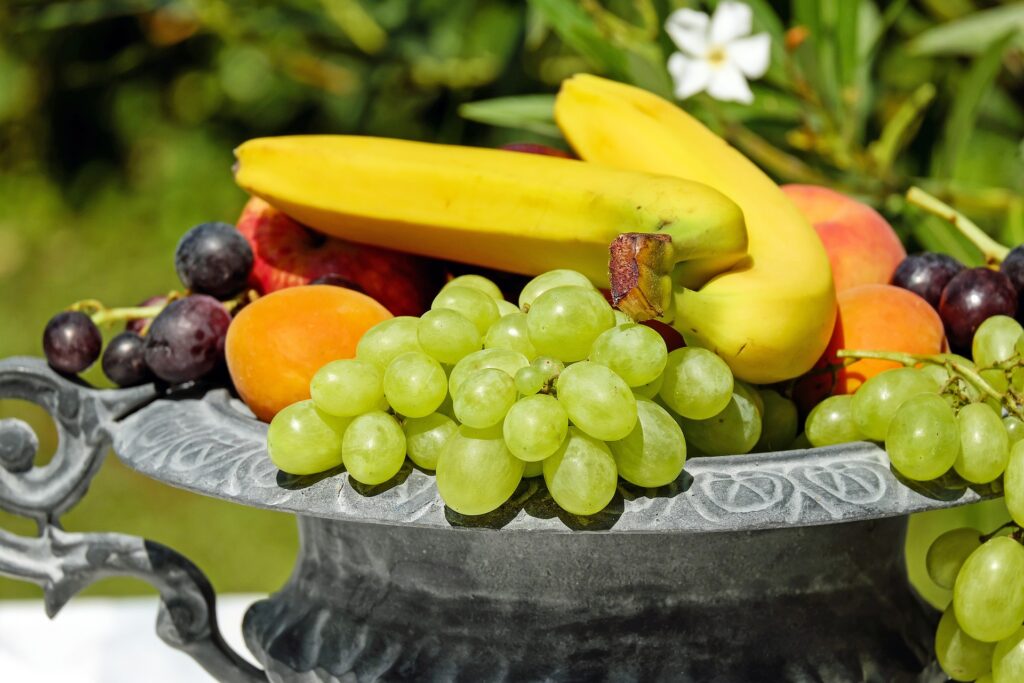Introduction to Sustainable Living
“Sustainable living” isn’t just a trendy buzzword; it’s a lifestyle. In a world filled with disposable products and fast fashion, embracing sustainability is a way to stand out from the crowd. It’s a ticket to join an exclusive club – the Earth lovers club, where membership is open to everyone and the perks include a cleaner planet and a brighter future. Let’s dive into what it means to live sustainably and why it’s not just a fleeting fad, but an essential way of life.
Why is Sustainable Living Important?
The Environmental Perspective
The choices we make daily, from the food we eat to the clothes we wear, directly impact the environment. By adopting sustainable living practices, we can reduce these negative impacts and contribute to a healthier planet.
- Climate Change Mitigation: Greenhouse gas emissions from transportation, agriculture, and energy production are driving climate change. Sustainable living practices like using public transportation, eating a plant-based diet, and reducing energy consumption can help mitigate these emissions. Imagine driving a car without the guilt of polluting!
- Biodiversity Protection: Unsustainable farming and deforestation are leading to habitat loss and threatening countless species. By choosing sustainably sourced products, we can support biodiversity. It’s like throwing a lifeline to your favorite animal!
- Water Conservation: Water scarcity affects over 40% of the global population. By conserving water in our daily lives through mindful consumption, we can play a part in preserving this vital resource. Think of it as giving a glass of water to the Earth every day!
The Economic Perspective
Sustainable living isn’t just a moral choice; it’s an economically wise decision.
- Cost Savings: Energy-efficient appliances, reusable products, and waste reduction can lead to significant cost savings. It’s like getting a paycheck from Planet Earth!
- Supporting Sustainable Jobs: By supporting sustainable brands and industries, we contribute to an economy that values social and environmental well-being. We’re investing in businesses that care about more than the bottom line.
- Long-term Economic Stability: A sustainable lifestyle supports a stable economy by reducing dependence on finite resources. It ensures that future generations have the resources they need to thrive, creating a legacy of prosperity.
Easy Ways to Embrace Sustainable Living
Reduce, Reuse, Recycle: The Three R’s
The mantra of sustainable living, these three R’s are more than just a catchy phrase; they’re a way of life.
- Reduce: Buy less and choose quality over quantity. It’s about decluttering your life and the planet simultaneously!
- Reuse: From upcycling furniture to using cloth bags, reusing items reduces waste and conserves resources. It’s creativity with a cause!
- Recycle: Recycling goes beyond just plastics and paper. Electronic waste, metals, and even textiles can be recycled. It’s like turning old things into brand-new treasures!
Energy Efficiency at Home
Here are ways to make your home a haven for sustainability.
- Smart Technology: Smart thermostats and appliances can optimize energy usage. It’s like having a personal energy coach!
- Water-saving Practices: Using low-flow faucets and collecting rainwater for gardening helps conserve water. Every drop counts!
- Solar Power: Installing solar panels can generate clean, renewable energy. It’s like turning your rooftop into an energy factory!
Sustainable Eating: Food Choices That Matter
Our eating habits directly affect the environment, and sustainable eating is like dining with Mother Earth.
- Plant-Based Choices: Meat production is resource-intensive and a significant contributor to greenhouse gas emissions. Even just one meatless meal a week can have a positive impact. Think of it as a culinary adventure!
- Supporting Local Farmers: Buying local means supporting community farmers and reducing transportation emissions. It’s like having a farmers’ market in your kitchen!
- Minimizing Food Waste: Reducing food waste through mindful shopping and utilizing leftovers helps conserve resources. Your fridge doesn’t have to be a food graveyard!
Plant-Based Choices: A Dietary Revolution
Embracing a plant-based diet is like giving Mother Earth a big, green hug.
- Environmental Impact: Animal agriculture contributes significantly to greenhouse gas emissions, deforestation, and water usage. By reducing meat consumption, you’re taking a stand against these environmental harms. It’s as revolutionary as putting solar panels on your fork!
- Health Benefits: A plant-based diet is rich in nutrients and associated with various health benefits, such as lower cholesterol and blood pressure. It’s like eating your way to a healthier body and planet.
- Ethical Considerations: Considering the welfare of animals is an essential aspect of sustainable eating. By choosing plant-based options, you’re voting against inhumane practices. That’s democracy in action on your dinner plate!
Conscious Consumerism
Every purchase is a statement about your values.
- Ethical Brands: Supporting brands with fair labor practices and environmental stewardship is essential. Your wallet is your vote!
- Minimalist Approach: Embracing minimalism means less waste and more intentional living. It’s about choosing quality over quantity, always.
- Educated Decisions: Knowing where your products come from and how they’re made empowers you to make educated decisions. Be a conscious consumer, and let your values guide your choices.

Supporting Local Farmers: The Community Connection
Buying local is like shaking hands with the person who grew your food.
- Reduced Carbon Footprint: Food transportation contributes to a significant portion of emissions. By buying local, you cut down on food miles, essentially turning your shopping basket into an eco-friendly vehicle.
- Fresh and Nutrient-Rich: Local produce is often fresher and retains more nutrients. It’s like having a farm-to-table experience in your kitchen.
- Strengthening Local Economies: Supporting local farmers bolsters the local economy. It’s not just about filling your pantry but fueling your community.
Minimizing Food Waste: A Zero-Waste Approach
Wasting food is like throwing resources in the trash. Here’s how to avoid it.
- Mindful Shopping: Plan your meals and shop accordingly to avoid overbuying. It’s like choreographing a culinary dance with no wasted moves!
- Utilizing Leftovers: Leftovers can be turned into new meals, from soups to casseroles. It’s like having a culinary time machine, bringing yesterday’s flavors into today.
- Composting Scraps: Food scraps can be composted to nourish your garden or indoor plants. It’s turning waste into plant gold!
Eating Seasonally: Nature’s Calendar
Embracing seasonal eating is like dancing to nature’s rhythm.
- Taste and Nutrition: Seasonal produce often tastes better and retains more nutrients. It’s Mother Nature’s way of saying, “Eat this now!”
- Environmental Benefits: Growing food in season requires fewer resources like water and artificial heating. It’s like giving the environment a well-deserved vacation.
- Supporting Biodiversity: Eating a diverse range of seasonal foods encourages agricultural diversity. It’s like painting a colorful, ecological masterpiece on your plate!

Choosing Sustainable Seafood: Oceans Matter Too
If you’re a seafood lover, making sustainable choices is like casting a lifeline to our oceans.
- Avoiding Overfished Species: Choose seafood from sustainable sources to prevent overfishing. It’s like fishing with care, ensuring there are fish for future generations.
- Understanding Labels: Look for certifications like the Marine Stewardship Council (MSC) to ensure your seafood is responsibly sourced. It’s like having a badge of honor on your dinner plate!
- Exploring Alternatives: Trying plant-based seafood alternatives or lesser-known sustainable species is an adventurous way to support ocean conservation. Dive into new flavors and save the seas at the same time!
Sustainable eating is a multifaceted approach that goes beyond mere food choices. It’s about aligning our culinary habits with the well-being of the planet, our communities, and ourselves. Whether you’re a seasoned eco-warrior or just dipping your toes into green living, the path to sustainable eating is rich, flavorful, and satisfying. So why not set a place at the table for Mother Earth and dine the way nature intended?
Making Sustainable Living Fun
DIY Sustainability Projects
Building your compost bin, crafting reusable beeswax wraps, or growing your herbs can be fun and fulfilling projects. Sustainable living doesn’t have to be boring; it can be an exciting hobby. Get your hands dirty, and you’ll find joy in creating something that not only looks good but does good.
Green Games and Activities
From eco-friendly scavenger hunts to recycling art projects, there are countless green games and activities to engage in with friends and family. Make learning about sustainability a fun and interactive experience.
The Challenges of Sustainable Living
Living sustainably is like trying to navigate a maze with a compass that only points in environmentally-friendly directions. It’s possible, but it’s not always easy. Let’s explore why:
Accessibility and Availability: Where’s My Green Store?
Sustainable products and services can be challenging to find, especially in areas without a strong eco-friendly presence.
- Limited Options: Some regions might lack stores that offer sustainable products. Imagine looking for an oasis in a desert of plastic!
- Cost Concerns: Often, sustainable products can be more expensive than conventional ones. It’s like paying a premium for being a good Earth citizen!
Misleading Information: The Greenwashing Dilemma
Greenwashing, or false claims of sustainability, can mislead even the most dedicated eco-warrior.
- Confusing Labels: Sometimes, products claim to be green without real backing. It’s like trying to solve a puzzle with pieces from different boxes!
- Lack of Transparency: Companies might be vague about their sustainable practices, making it challenging to make informed choices. It’s like buying a mystery box of environmental stewardship!
Lifestyle Adaptation: Breaking Old Habits
Switching to a sustainable lifestyle might require significant changes in habits and preferences.
- Resistance to Change: We’re creatures of habit, and changing our ways can be tough. It’s like teaching an old dog new eco-friendly tricks!
- Social Pressures: Peer pressure or societal norms might discourage sustainable choices. It’s like swimming upstream in a river of consumption!
Technological and Infrastructure Barriers
Sustainable living isn’t just about individual choices; it requires support from technology and infrastructure.
- Lack of Infrastructure: In some places, recycling facilities or public transportation might be scarce. It’s like wanting to dance but finding no dance floor!
- Slow Technological Advancements: Innovations in sustainable technology might not be keeping pace with the need. It’s like waiting for a slow cooker to prepare fast food!
Possibilities in Sustainable Living: The Future Awaits
Peering into the crystal ball of the future, we see a landscape filled with green promise and innovative ideas. Let’s explore what’s on the horizon:
Technological Innovations: The Green Revolution
From renewable energy to biodegradable materials, technology is poised to lead the way in sustainable living.
- Clean Energy Solutions: Imagine harnessing the sun, wind, and water to power your entire life. It’s like turning nature into a giant battery pack!
- Zero-Waste Products: Future innovations might make waste a thing of the past. Picture a world where everything gets a second life or more!
Community and Government Support: Together We Stand
As awareness grows, communities and governments are likely to increase support for sustainable living.
- Policy Changes: Governments may enact laws that support sustainability, like banning single-use plastics or incentivizing renewable energy. It’s like having a team of legislators cheering for Team Earth!
- Community Initiatives: From local farmers’ markets to community gardens, a shared commitment to sustainability can thrive. It’s like having a neighborhood potluck, but the main dish is a healthy planet!
Education and Awareness: Spreading the Green Gospel
Educating people about the importance of sustainable living will play a critical role in shaping the future.
- School Programs: Imagine a future where sustainability is part of the curriculum from kindergarten onwards. It’s like learning your ABCs and 123s of saving the planet!
- Public Campaigns: Increased awareness through public campaigns can create a cultural shift towards green living. Picture a world where being green is as normal as breathing air!
Conclusion
The phrase “sustainable living” isn’t just a trendy buzzword or a lofty ideal; it’s an actionable roadmap guiding us towards a more balanced coexistence with the natural world. Yet it’s true that navigating the path to sustainable living comes with its own set of challenges—be it reducing waste, minimizing our carbon footprint, or shifting to renewable energy sources. These challenges may seem daunting, but they are far from insurmountable.
Creativity plays an essential role in addressing these hurdles. Take, for instance, the inventive ways communities are recycling waste materials to create eco-friendly products or how architects are designing energy-efficient buildings that merge form and function with environmental responsibility. By thinking outside the box, sustainable living evolves from a static concept into a dynamic, ever-adapting lifestyle that capitalizes on human ingenuity.
Determination is equally crucial for advancing sustainable living goals. It’s the driving force behind policy changes, corporate accountability, and grassroots movements. Whether it’s the tireless work of environmental activists or the committed efforts of individuals to make greener choices in their daily lives, this determination fuels the momentum needed to bring about real change. From consumer choices that prioritize sustainably sourced products to the impassioned advocacy that shapes public policy, the determination can act as the wind in the sails of the ship steering toward sustainable living.
The power of collective effort should never be underestimated when we talk about sustainable living. After all, sustainability is not a solo endeavor; it’s a collective responsibility we all share. When communities band together to establish local food systems, reduce waste, or clean up natural habitats, the impact is exponentially greater than what one person could achieve alone. Collective effort not only amplifies the effectiveness of sustainable practices but also fosters a sense of community, making the journey toward sustainability a communal experience.
Looking forward, envision a world where sustainable living is not just an alternative but the norm. Imagine cities where public transportation runs solely on renewable energy, households that are virtually waste-free, and agricultural systems that enrich the earth rather than deplete it. This isn’t a far-off utopia; it’s an attainable reality within our grasp. As the urgency for sustainability intensifies, it becomes clear that the limitations we face today are but stepping stones leading us to a future where sustainable living shapes every facet of our existence—from the food we eat to the energy that powers our homes.
So why not buckle up for an exhilarating journey toward tomorrow’s sustainable world? Picture roads paved with renewable energy solutions, from solar panels integrated into the asphalt to electric cars as a commonplace sight. Imagine a world where sustainable living principles are integrated into education systems, empowering future generations to live in harmony with the Earth. The sky isn’t just the limit; it’s the starting point for exploring the boundless opportunities that sustainable living has to offer. As we embark on this collective journey, we are not merely adapting to survive; we are evolving to thrive—building a legacy of sustainability for generations to come.
Frequently Asked Questions (FAQs)
- What is sustainable living? Sustainable living is a conscious choice to reduce your impact on the environment through daily practices and decisions.
- Is it expensive to live sustainably? Not necessarily. Many sustainable choices save money in the long term.
- Can I make a difference on my own? Yes! Every small step towards sustainability has a ripple effect. Your actions matter.
- Do I have to give up my favorite things? No. It’s about finding sustainable alternatives or being mindful of consumption.
- How can I make sustainable living fun for my family? Get creative with DIY projects, games, and activities that promote sustainable practices.




